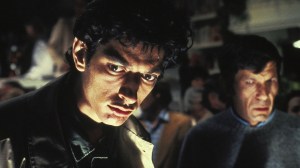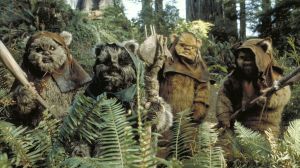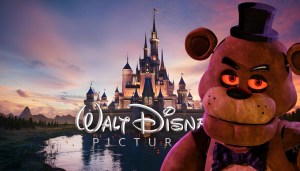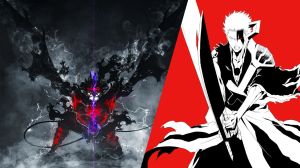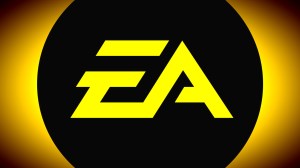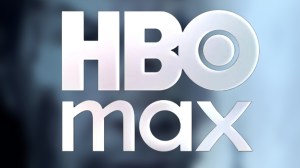Fusing politics and horror is nothing new, but in a time where global politics are marked by heightened anxiety on the part of virtually everyone, that sort of movie seems to have come into fashion with a vengeance. One thing that separates the recent indie horror-drama The Power from the rest, though, is that it’s a movie set in the U.K. in the 1970s. It unfolds against a backdrop of real protest and real political intrigue, but at least for most Americans, it’s unlikely to make you feel singled out or annoyed on a personal level.
Videos by ComicBook.com
In The Power, Rose Williams plays a young nurse who is forced to work the night shift in a crumbling hospital, as striking miners switch off the power across 1974 Britain. Unfortunately for her, inside the hospital walls lurks a terrifying presence that threatens to consume her and everyone around her.
Williams spoke briefly with ComicBook about taking the true-life events of nearly 50 years ago, and bringing them to life in a new way.
How much did the time period of the ’70s stick out to you in the screenplay? Certainly it impacted the final look of the film in a big way.
I think [director Corinna Faith] had a very specific vision that was so attuned to the time period, the early seventies, and also the location of it being the east end of London.
It was fascinating to hear Corinna speak on the recipe of that when I met her. Throughout the process, and in reading the script, the level of detail that she had within the story and within the production design of the movie — like the color palette that she used, the costume design, everything — was incredibly specific to exploring institutional abuse at that time, in that part of London as well. There were slums that existed, where these children were dying. It was almost this kind of like, after the freedom of the ’60s, suddenly the early ’70s, there was a heightened misogyny in the media, and there were abuses being protected by institutions like hospitals. So it was a really perfect recipe, I think, for this genre and for this exploration of a specific trauma related to that time.
This is a movie with a few different layers. Was there anyplace in particular that you thought they all clicked together really nicely?
I want to remember this quote exactly, that Laura Bellingham, our wonderful director of photography said. She says sometimes when you’re making a film, you have this strange sensation of living within the film in the director’s head. What an exhilarating and haunting privilege that was. And I think that’s exactly what it was. It was this really clever mix of world and feelings, through the time setting and within the walls of that hospital, and also the kind of real world elements of us shooting in an abandoned psychiatric hospital.
All of us were very invested in the script. I think for me, the overarching drive of the film, and how I approached the character, was this opportunity to kind of play out a metaphor for a young woman that’s been silenced, and has that sense of pressure and trauma over the top of her head at all times. Living with that anxiety, and living with the pain of being suppressed, when she has an opportunity to express and explore that rage, it’s an exploration of female rage really, and connection between women in our story.
So I guess all of elements working together, all ultimately connect to the overarching message and intent of the film, which was to explore what it is to be silenced as a woman.
Because it’s movie that has a lot going on in terms of big messages, big cultural events. Is it hard to sometimes zero in on character work when you have to be kind of aware of all of the larger things that are going on around you?
Yes and no. I think there can be the core of a story and a core of a character.
At Val’s core, she has been raised in an orphanage in a real world place that existed. She had been abused as a child, and then had wanted to give back because she suffered so much in her childhood. She wanted to contribute to making a better world and for caring for children. So I think they kind of bleed into each other, and that the message of the movie and also the character work are interconnected.
I’m a massive fan of escapism, the genre. And I love horror. I love fantasy. I think it’s important to be able to escape into a story, but I also think that escapism and enjoyment of a genre and can coexist with the filtering of a message.
What parts of the movie might have been deceptively difficult, or complex to produce, in a way that wouldn’t immediately come through onscreen?
That’s a good question. I think because it was an indie and we obviously had financial limitations. It was really interesting to see how every department, and Corinna, was super creative when it came to creating these visuals, or due to time constraints but also creative choice, some scenes were just one setup. And I come from doing mostly TV, where you get a wide and a two shot and a mid and then you go close and closer or whatever. And it’s a very structured way of shooting. But in this case, I remember one of the first scenes was when I walked and knocked on matron’s office door to go for my job interview. It was just a high angle shot of me walking through a door, and a couple of takes, and that was it. Corinna had so meticulously planned out her shot, she knew exactly how she was going to shoot it. It was really effective and freeing and creative, to be working in that kind of environment.
And stunt stuff was simpler than you think, really. When I get pulled back by an invisible force, after I come across a creepy looking stuffed animal in the basement of the hospital, that was our stunt coordinator physically pulling me back, just dressed in a suit that he could be painted out in post. So it was simple stunt pieces, more simple than you would imagine, because it was an indie.
That was really an amazingly creative experience for me, because it was kind of on-the-go decisions prepared with Corinna’s incredible planning. For example, when you see my feet start levitate, I was literally holding onto a pole and being lifted. Two guys on either side of the pole lifting up and I was holding onto the pole, like a monkey bar. It was simple creative things, and I really loved it because it was such a contrast to working in TV.
The Power is now available on DVD, digital, and to stream for free on Shudder.

